Abstract 5/2024
Table of content
Katarzyna Cholc, Joanna Wachnicka – Evaluation of the functioning of bicycle lanes – the case of the Tri-City
Joanna Dykas, Renata Żochowska – Analysis of the impact of rail traffic on the surroundings in terms of animal hitting in the Silesian Voivodship
Martyna Gondek, Zofia Bryniarska – Analysis of transport behaviour of residents of the Wieliczka commune and neighboring municipalities in commuting to Kraków – parth I
Abstracts
Katarzyna Cholc, Joanna Wachnicka
Evaluation of the functioning of bicycle lanes – the case of the Tri-City
Abstract: This article deals with the analysis of footage of three selected segments of intersections in Gdansk with bicycle lanes designated as part of the roadway. Based on the aforementioned footage, an assessment of the organization and volume of traffic, the behavior of cyclists and drivers, and an analysis of conflict situations was made. The behavior of bicyclists within each of the three study areas was analyzed. The number of cyclists at the intersections in the hourly interval (from 6 a.m. to 8 p.m.) according to their respective routes, the percentage of cyclists on the selected routes at the intersection, and the percentage of cyclists in the bicycle lanes and off the roadway at the intersection were presented. From the results presented, it was concluded that a very small percentage of cyclists used the available bicycle lanes at the analyzed intersections. A significant number of cyclists chose routes running on sidewalks located within the intersection. Next, the focus was on observing interactions between cyclists and drivers on the roadway. Dangerous situations that recurred most often were described and counted. At all three intersections, the most recurring event was vehicles occupying and invading the bicycle lane. The space intended for cyclists was being violated, which could end in a collision. These observations led to the question: whether the use of bicycle lanes in such places makes sense and whether it is a safe solution for cyclists. The result of the above-mentioned analysis is the conclusion that the application of bicycle lanes at intersections with a large number of traffic lanes, difficult intersection geometry is not an appropriate solution.
Key words: bicycle traffic, bicycle lanes
Joanna Dykas, Renata Żochowska
Analysis of the impact of rail traffic on the surroundings in terms of animal hitting in the Silesian Voivodship
Abstract: The issue of railway incidents involving animals is multifaceted. The consequences of these incidents affect both the natural environment, leading to depopulation of various animal species, and the functioning of the rail transport system and its surroundings. Depending on the type of incident, different measures are taken to prevent such situations in the future. Consequently, there is a need to identify this issue. This article presents an analysis of animal hit by railway vehicles in different time sections on the example of the Silesian Voivodeship. As a result of the study, it was observed that more than 90 per cent of the cases involve forest animals. Events of this type occur in the autumn season, in the evening and in the morning, when animals go in search of food.
Key words: rail transport, animals being hit by rail vehicles, ways to prevent animals being hit
Martyna Gondek, Zofia Bryniarska
Analysis of transport behaviour of residents of the Wieliczka commune and neighboring municipalities in commuting to Kraków – parth I
Abstract: The subject of the article is the analysis of transport behaviour of residents of the Wieliczka commune and neighbouring communes when commuting to Kraków. The study covered the area of the Wieliczka Poviat, and more specifically the communes: Wieliczka, Biskupice, Niepołomice and Gdów. The dynamic development of the study area makes understanding the transport preferences of residents crucial. The research problem was to determine the transport behaviour of the inhabitants of the subject area in order to identify opportunities to improve the functioning of the communication system in this region. Two research hypotheses were adopted. In the first one, it was concluded that residents critically assess the quality of communication in commuting to Kraków, while in the second one, it was assumed that the main problem of residents is road congestion in the studied area. The part I presents the characteristics of the region and its inhabitants based on statistical data. Transport infrastructure, traffic generators, public transport and socio-economic connections between Wieliczka and Kraków are described. The research methodology, questionnaire design and data collection methods were discussed. Respondents were characterized based on their personal details. For research purposes, a questionnaire completed by 520 inhabitants of the presented region was used. The answers were collected online, by posting the survey questionnaire on Facebook, and face-to-face. A detailed interpretation of the study results was made, detailing each question. It was analysed what factors influence the choice of means of transport and solutions were proposed that could contribute to improving the functioning of the transport system in the surveyed communes. Part II (TMiR No. 7/2024) interprets the results of the study in detail for each question. It is suggested that the peripheral areas of the studied area – those located furthest from Kraków – have worse connections with Kraków than the city of Wieliczka. Both research hypotheses were partially confirmed. The first one was due to the critical but positive assessment of the train mode of transport, while the second one was due to the concentration of congestion on the exit road from Wieliczka to Kraków, and not in the entire area. Based on the data analysis, important aspects requiring attention in further planning of the optimal transport system in the region were identified. This will enable the development of effective strategies to improve the quality of residents’ travel and minimize the negative impact on the environment.
Key words: mobility, transport behaviour, assessment of preferences and satisfaction, means of public transport

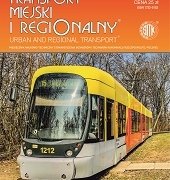
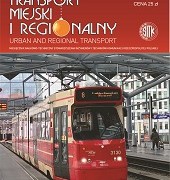
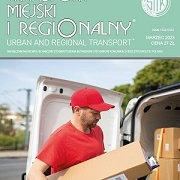 SITKRP
SITKRP 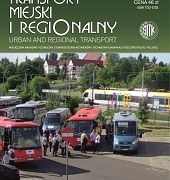
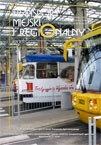 SITK RP
SITK RP 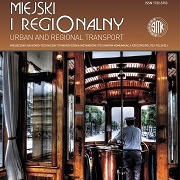

 SITK
SITK SITK
SITK